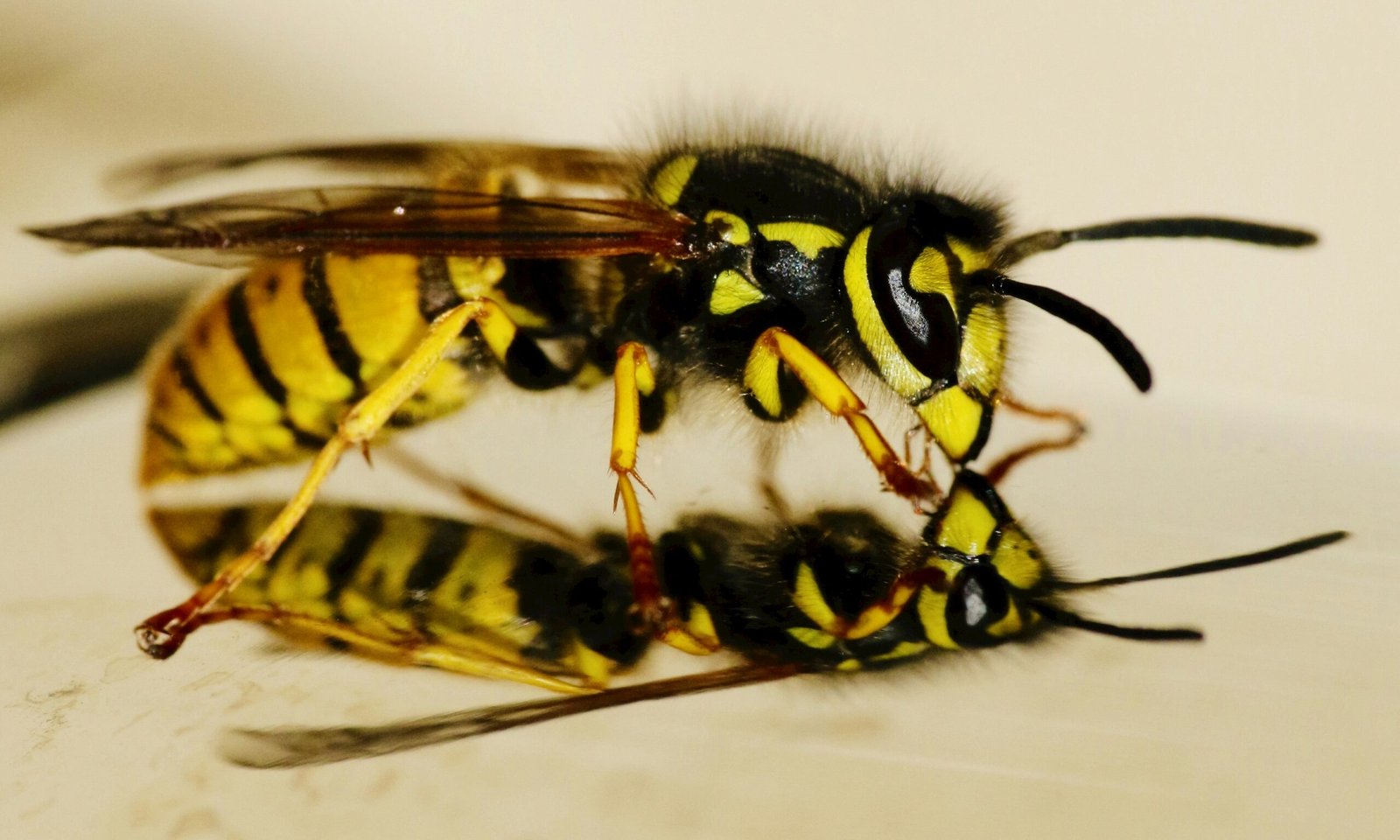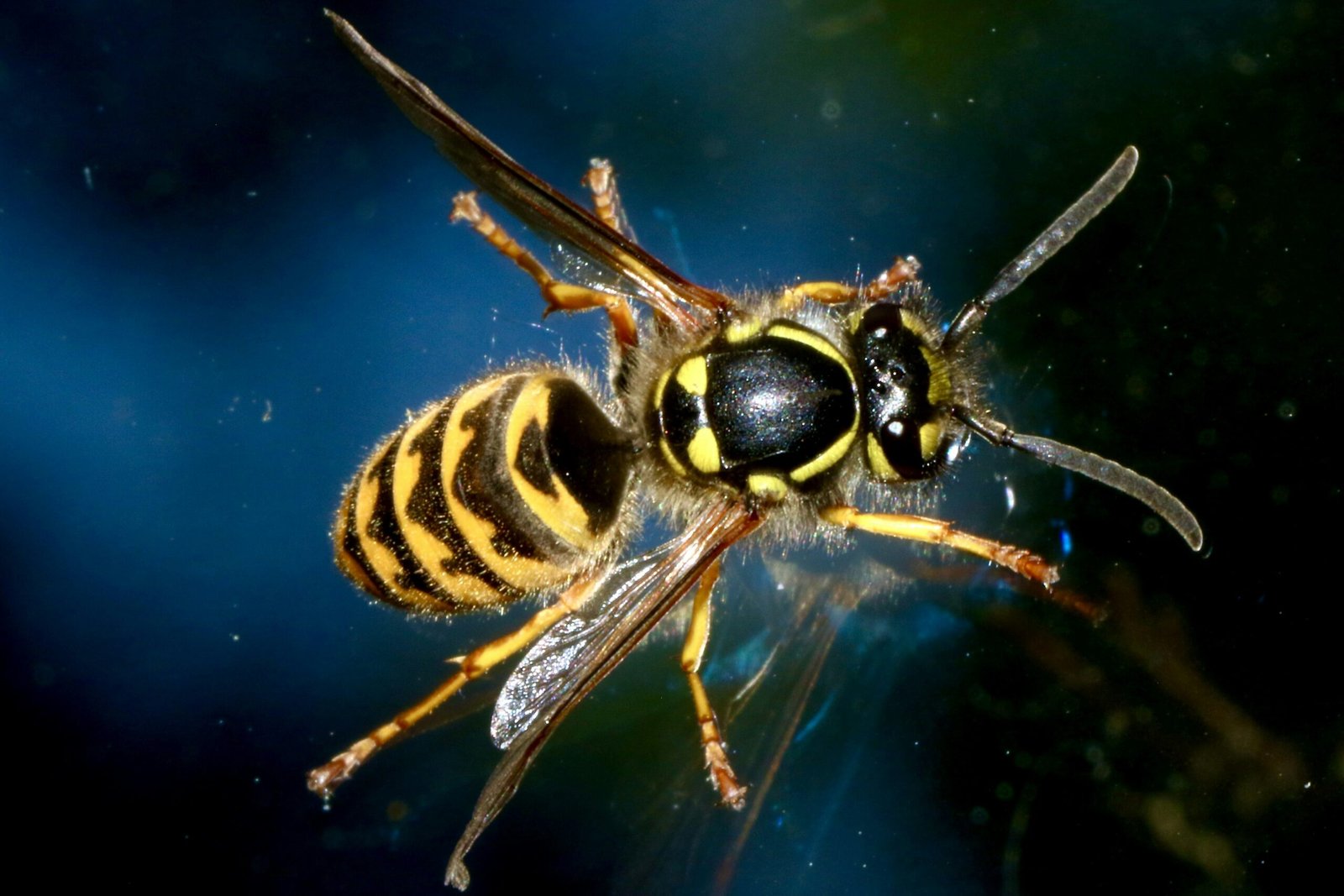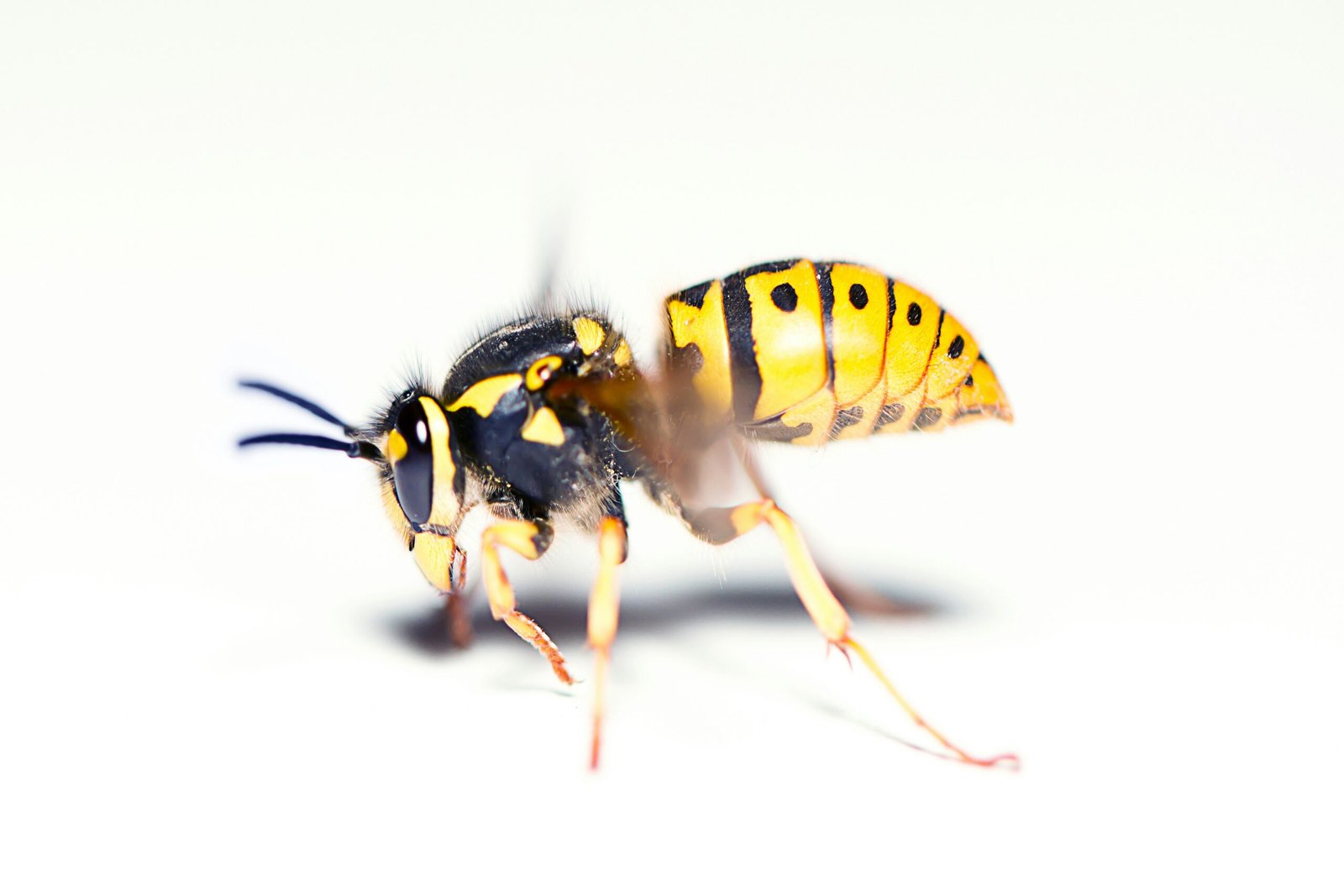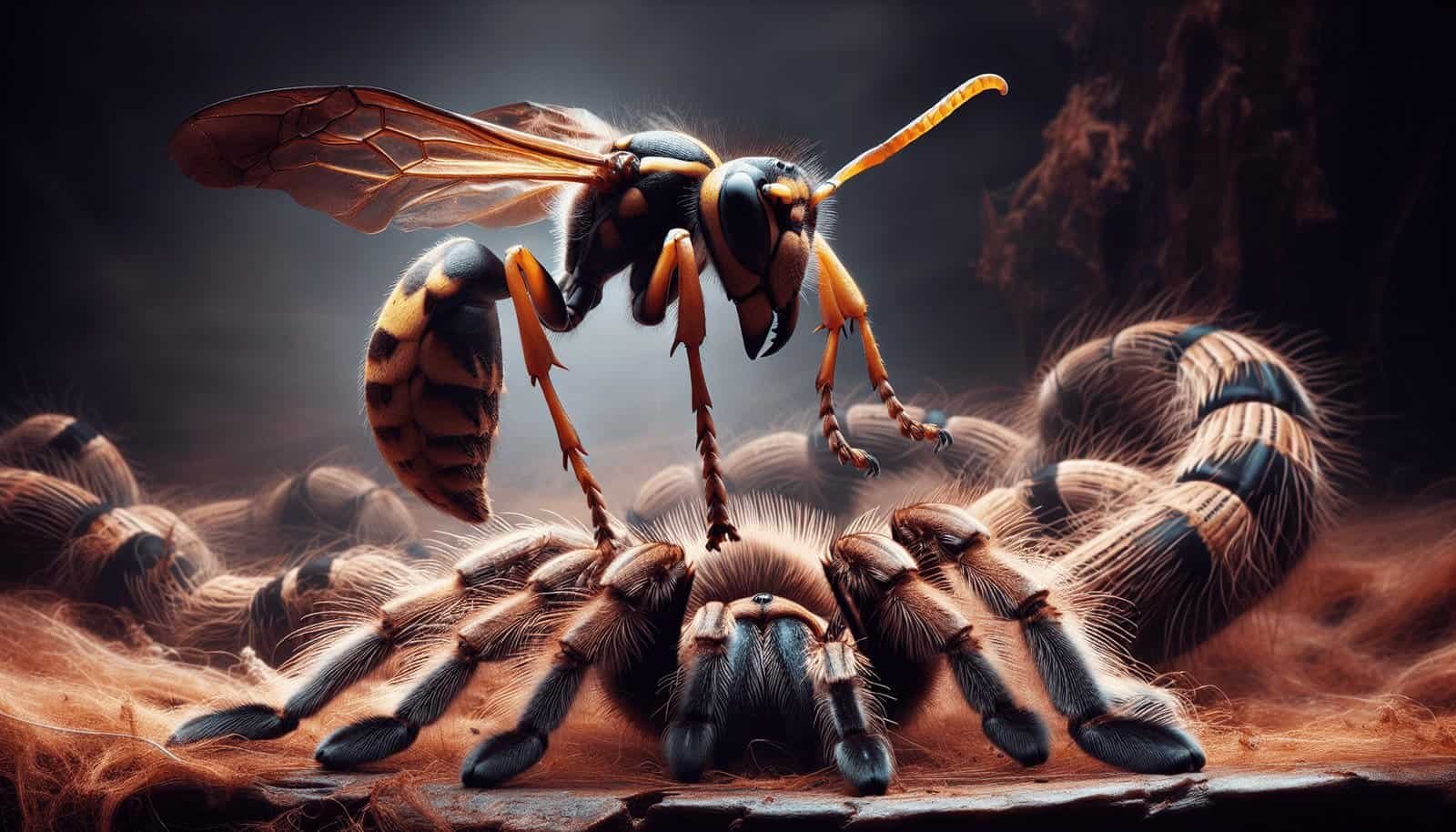Have you ever wondered if there are certain wasp species that paralyze tarantulas before laying their eggs? Well, you’re in for an interesting discovery! We will explore this intriguing phenomenon and uncover whether there are indeed specific wasp species that employ this unique reproductive strategy. Get ready to be amazed by the wonders of nature and the intricate relationships between different species!

Introduction
Tarantulas, with their imposing size and fearsome appearance, have long captivated and intrigued both arachnophiles and the general public alike. These formidable creatures are known for their ability to inject venom into their prey, immobilizing them in a matter of seconds. However, in an incredible display of nature’s intricate web, certain species of wasps have evolved to exploit this spider’s strength by paralyzing them before laying their eggs. In this article, we will explore the fascinating phenomenon of wasps paralyzing tarantulas, examining the behavior, reproductive strategy, and the intricate relationship between these two seemingly disparate creatures.
The phenomenon of wasps paralyzing tarantulas
Overview of the behavior
Wasps that paralyze tarantulas exhibit a peculiar and captivating behavior that has intrigued scientists and nature enthusiasts for centuries. Upon locating a tarantula, the wasp delivers a series of precisely aimed and venomous stings to the spider’s nervous system, effectively paralyzing it.
Explanation of the reproductive strategy
This act of paralyzing tarantulas serves a crucial purpose in the wasp’s reproductive strategy. Once the tarantula is paralyzed, the wasp then lays its eggs upon the spider’s body, providing a secure and abundant food source for its developing larvae. This strategy ensures that the wasp’s offspring have a guaranteed source of sustenance to ensure their survival.
Examples of other insect hosts
While tarantulas are perhaps the most famous hosts of parasitic wasps, they are not the only insect prey that undergoes this unsettling fate. Other insects, such as cockroaches and beetles, can also fall victim to these parasitic wasps, highlighting the diverse and cunning nature of these fascinating creatures.
Overview of Tarantulas
Characteristics of tarantulas
Tarantulas are large, hairy spiders that belong to the Theraphosidae family, with over 900 known species. They are renowned for their size, which can range from a few inches to as large as a human hand. Tarantulas possess eight legs, multiple eyes, and fangs that can deliver a potent venomous bite.
Habitat and lifestyle
Tarantulas are found in various habitats around the world, ranging from deserts and rainforests to grasslands and mountains. They construct burrows or reside in tree hollows, providing them with a safe retreat and a suitable environment for hunting and capturing prey.
Importance of tarantulas in ecosystems
Despite the common fear associated with tarantulas, these spiders play a vital role in the ecosystems they inhabit. As predators, they help control populations of insects and smaller animals, thus maintaining the delicate balance within their ecosystems. Additionally, tarantulas serve as a significant food source for a variety of predators, contributing to the intricate food chains found in their diverse habitats.
The Wasp-Tarantula Relationship
Mutual benefits of the relationship
The relationship between wasps and tarantulas represents a remarkable example of mutualism, where both parties benefit from their association. While the wasp relies on the paralyzed tarantula as a food source for its young, the spider receives protection from potential predators due to the wasp’s presence.
Wasp species known to parasitize tarantulas
Several species of wasps have been identified as parasitizing tarantulas. Among them, the Pepsis grossa, commonly known as the Tarantula Hawk, and the Hymenoepimecis argyraphaga are two prominent examples. These wasps have evolved unique adaptations that allow them to prey upon tarantulas successfully.
Factors influencing wasp species selection
Various factors influence the wasp species’ selection when choosing a suitable tarantula host. These factors include the size, behavior, and habitat preferences of both the wasp and the tarantula. The specific requirements of the wasp’s reproductive process and the availability of potential tarantula hosts also play a crucial role in this selection process.

Wasp Species that Paralyze Tarantulas
Pepsis grossa (Tarantula Hawk)
The Pepsis grossa, commonly known as the Tarantula Hawk, is among the most well-known wasps that parasitize tarantulas. These wasps possess formidable stingers and employ specific hunting techniques to capture and paralyze their tarantula prey. Once the tarantula is paralyzed, the female wasp lays a single egg upon the spider’s body, ensuring a fresh and abundant food supply for its offspring.
Hymenoepimecis argyraphaga
Another intriguing example is the Hymenoepimecis argyraphaga, a wasp species found in Costa Rica. This wasp exhibits a unique behavior by manipulating the spider’s web-building instincts, coaxing the tarantula into creating a specialized cocoon-like structure. Once the tarantula has constructed this silk enclosure, the wasp lays its eggs inside, providing a safe and controlled environment for its larvae.
Evolutionary adaptations for tarantula paralysis
Wasp species that parasitize tarantulas have evolved remarkable adaptations to successfully paralyze these impressive spiders. Their venom is specifically designed to target the nervous system of the tarantula, incapacitating the spider while keeping it alive for extended periods to serve as a fresh food source for their developing offspring.
Paralyzing Techniques and Venom
Description of the paralyzing process
The paralyzing process employed by wasps is a highly orchestrated and precise act. As the wasp stings the tarantula, it injects venom directly into the spider’s nervous system, effectively blocking neural signals and rendering the spider immobile.
Characteristics and effects of wasp venom
Despite the potency of wasp venom, it does not cause immediate death to the tarantula. Rather, it induces temporary paralysis, allowing the wasp to manipulate and control the spider’s actions without risking injury. The venom contains specific compounds that target nerve cell receptors, disrupting their normal functioning.
Defense mechanisms of tarantulas
Tarantulas, although formidable creatures, have developed defense mechanisms to protect themselves from would-be predators, including parasitic wasps. These defenses include venomous fangs, urticating hairs that can cause irritation, and aggressive behaviors such as rearing up on their hind legs in a threatening display.

Reproductive Process of the Wasps
Finding suitable tarantula hosts
Wasps that parasitize tarantulas utilize a variety of methods to locate suitable hosts. They rely on their keen sense of smell to detect the presence of tarantulas in their habitats, as well as visual cues and vibrations that may signify the spider’s presence.
Injecting eggs into paralyzed tarantulas
Once a tarantula has been successfully paralyzed, the wasp precisely injects its eggs into the spider’s body. The tarantula serves as a living incubator, providing the ideal conditions for the eggs to develop and hatch.
Development and hatching of wasp larvae
The wasp eggs develop inside the paralyzed tarantula, feeding off the spider’s tissues. Eventually, the larvae emerge from the spider’s body and enter their next life stages, where they undergo metamorphosis and mature into adult wasps.
Life Cycle of the Wasp-Tarantula Relationship
Stages of wasp-tarantula interactions
The life cycle of the wasp-tarantula relationship consists of several distinct stages. These stages include the wasp’s search for a suitable host, the paralyzing and oviposition process, and the development and emergence of the wasp larvae.
Duration of larval development
The duration of larval development varies depending on a variety of factors, including environmental conditions and the species of wasp. In some cases, the larvae can complete their development within a few weeks, while in others, it may take several months.
Impact on tarantula population
The impact of wasps parasitizing tarantulas on the spider population is still a topic of ongoing research. While the presence of parasitoid wasps may cause a reduction in the tarantula population within a given area, the specific extent of this impact is still under investigation.

Research and Scientific Studies
Ongoing studies on the phenomenon
Scientists and researchers continue to study the intricate nuances of the wasp-tarantula relationship. Ongoing research aims to uncover further details about the behavior, evolutionary adaptations, and ecological impact of these fascinating interactions.
Methods used to study wasp-tarantula interactions
Researchers employ a variety of methods to study wasp-tarantula interactions, including field observation, laboratory experiments, and genetic analysis. These interdisciplinary approaches provide valuable insights into the complex nature of this unique predator-prey relationship.
Insights gained from research
Scientific studies on the phenomenon of wasps paralyzing tarantulas have shed light on the coevolutionary relationship between these seemingly mismatched creatures. They have revealed the intricate nature of wasp venom, the specialized adaptations of tarantulas to defend against parasitism, and the ecological importance of these interactions in natural ecosystems.
Conclusion
The remarkable phenomenon of wasps paralyzing tarantulas before laying their eggs showcases the intricate and awe-inspiring interconnections within nature. Through their venomous stings and precisely orchestrated behaviors, parasitic wasps have evolved to manipulate and exploit the formidable strength of tarantulas, ensuring the survival of their offspring. Despite the unsettling nature of this relationship, it underscores the intricacies of predator-prey interactions and serves as a reminder of the extraordinary adaptations and strategies found within the animal kingdom. As research continues to unveil the mysteries of this captivating phenomenon, we gain a deeper appreciation for the complexity and diversity of our natural world.
